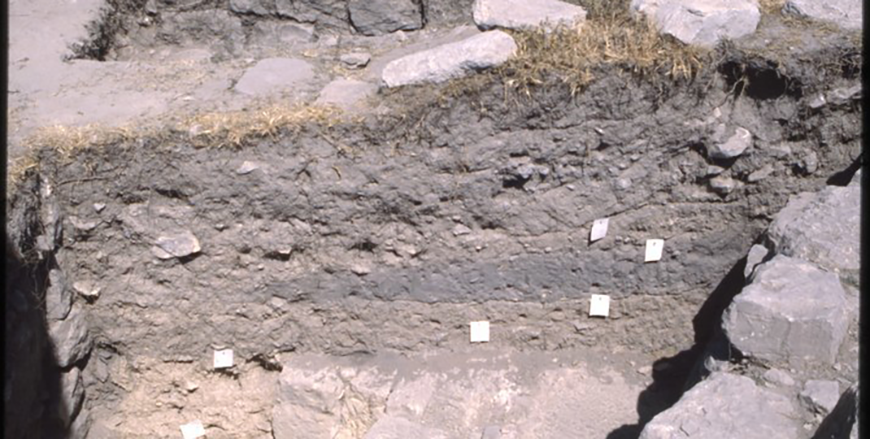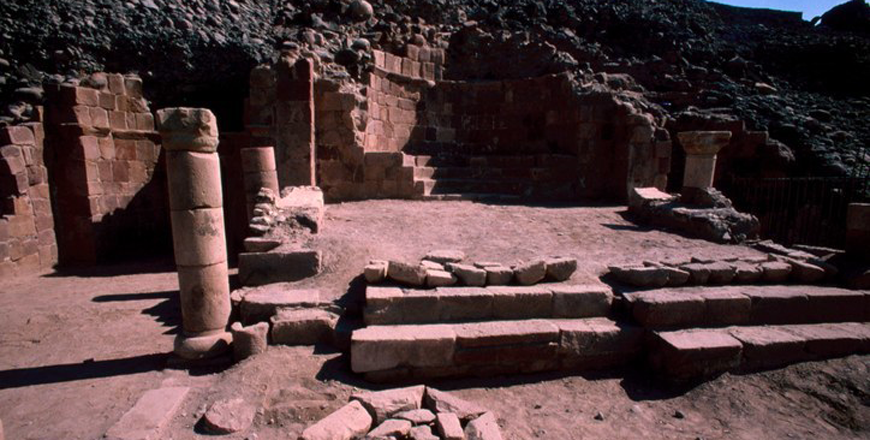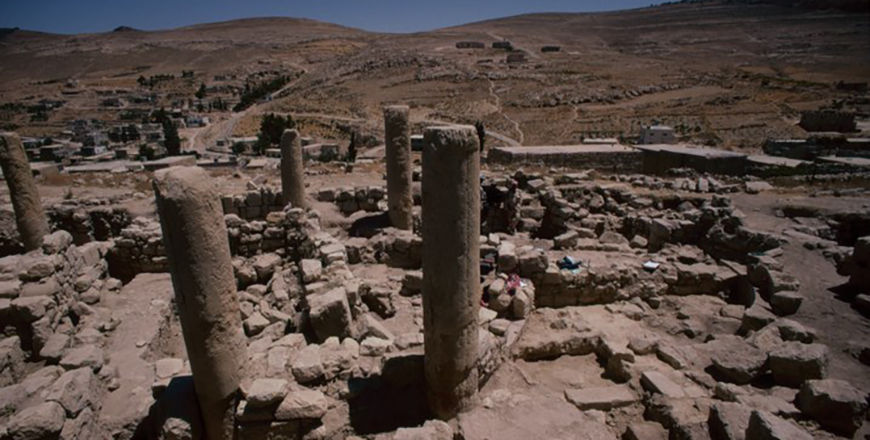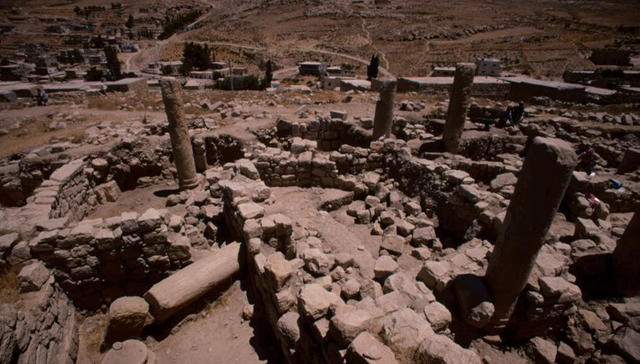You are here
Byzantine-Era church at Gharandal yields significant pottery finds
By Saeb Rawashdeh - Feb 11,2025 - Last updated at Feb 11,2025

The remains of the Byzantine church in Gharandal where many pieces of potter from the Byzantine and the early Islamic periods were found (Photo courtesy of ACOR)
AMMAN — Gharandal was a significant site during the Byzantine and early Islam period and pottery was assembled from the site during the 1997 and 1998 seasons.
The site is located 15 km southeast from Tafileh and in both seasons the pottery was collected with the aid of sieving and all was retained.
These procedures have enabled tiny eggshell thin sherds to be retrieved that otherwise would not have been noted.
The pottery catalogue is based on the identification of individual ware and form types, said Antony Grey from the Museum of London, and each ware type is quantified by undertaking a sherd count for each context, using catalogue and layer pro formas designed by the project finds officer Rachael Sparks, who also entered the hand-written data into the project databases.
"The project conservator Noel Siver undertook the restoration of vessels from joining pieces and cleaned some sherds. Judith Sellers, project illustrator, produced line drawings of the catalogued items. To date 48 ware types have been tentatively proposed, subject to confirmation by a further study including petrological analysis," Grey explained, adding that a complete ceramic sequence from within the church has been compiled, and subsequent excavation should enable a sequence to be built up for the area south of and adjacent to the church.
The church sequence commences from deposits directly on the floor of the church, laid down following the church's termination as a place of worship and its subsequent incorporation into secular village structures, Grey said, adding that dating of the end of the building's use as a church appears to be late-eighth to early-ninth century, based on the ceramic evidence.
"Residual earlier material from the Iron Age, Nabataean and Roman periods is present in some layers. The sequence terminates with the cessation of occupation in the Middle Islamic village overlying the church, an event tentatively dated to before the seventeenth century due to an absence of Ottoman smokers' pipes," Grey elaborated, stressing that the most significant ceramic group was obtained from a baulk in the church, where the yellow chippy layer of fill directly overlying the church floor was well preserved.
The ceramics from this layer appear to form a closed group with no appreciable earlier residual or later intrusive material. Sixteen items were catalogued from this group.
Pottery originated from both Byzantine and early Islamic period bowls, jars with Diagnostic among wavy combing, an omphalos base of the eighth-century type noted at Pella, a red-painted jar and a tall, plain-necked jar.
"The pottery, while occasionally fired to metallic hardness, is generally on the soft side, while both -oxidised and reduced exterior surfaces are represented in the corpus. Further technical study of the ceramic groupings from Gharandal would be worthwhile, as demonstrated by the petrographic analysis of coarse wares[cooking vessels, lids, jugs, amphorae and storage jars] from fifth- to eighth-century contexts at Dayr'Ain 'Abata", where a Greek archaeologist Konstantinos Politis has worked for decades,
The study of the Dayr 'Ain 'Abata pottery has defined ten petrographic groupings, correlating well with the ceramic typology and proving petrographically consistent with the local geology, Grey underlined, noting that imported 'exotics' were also successfully isolated and a similar scenario may be developed for Gharandal' Byzantine and early to middle Islamic-period pottery.
Related Articles
AMMAN — The Dead Sea region has been inhabited since prehistoric times, with thousands of graves dating back to the Neolithic and Bronze Age
AMMAN – Ceramics from Gharandal constitute an important component of a much larger research project on the social and economic history of La
AMMAN — Gharandal is located in south Jordan, some 15 kilometres south-east of Tafileh and five kilometres south-east of the Edomite site of



















